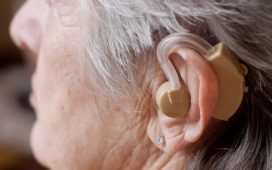Defining Lung Cancer: An Overview
Lung cancer is characterized as a group of diseases that originate in the cells of the lungs, the two spongy organs responsible for oxygen exchange in the respiratory system. It is one of the most common and serious types of cancer, often presenting a challenge for both diagnosis and treatment.
The development of lung cancer typically follows a series of mutations in lung cells, which cause them to grow uncontrollably and form tumors. These tumors can be benign, meaning they do not spread to other parts of the body, or malignant, which are cancerous and can invade nearby tissues and metastasize to distant organs.
Early detection of lung cancer is crucial as it significantly improves the chances of successful treatment. However, symptoms often appear only in advanced stages, making awareness and regular health check-ups vital. The following points highlight key aspects of lung cancer:
- Lung cancer primarily affects individuals over the age of 40, with a higher incidence in older populations.
- It is broadly classified into two main types: small cell lung cancer (SCLC) and non-small cell lung cancer (NSCLC), with NSCLC being more prevalent.
- Symptoms can include persistent cough, chest pain, shortness of breath, and unexplained weight loss, but these can often be mistaken for other less serious conditions.
Understanding the nature of lung cancer and its early symptoms is the first step towards effective management and prevention of this life-threatening disease.
Types of Lung Cancer: Small Cell and Non-Small Cell
Lung cancer primarily presents in two main forms: small cell lung cancer (SCLC) and non-small cell lung cancer (NSCLC). Each type originates from different types of cells in the lungs and has distinct characteristics and treatment approaches.
- Small Cell Lung Cancer (SCLC): Accounting for about 10-15% of all lung cancers, SCLC is less common but more aggressive. It tends to grow and spread rapidly, often being diagnosed at a more advanced stage. SCLC is strongly associated with cigarette smoking.
- Non-Small Cell Lung Cancer (NSCLC): Making up approximately 85% of cases, NSCLC is the most prevalent form of lung cancer. It includes subtypes such as adenocarcinoma, squamous cell carcinoma, and large cell carcinoma. NSCLC generally grows and spreads more slowly than SCLC.
Understanding the differences between SCLC and NSCLC is crucial for determining the appropriate treatment plan. While surgery, radiation, and chemotherapy are common treatments, the specific approach may vary based on the type and stage of the cancer. For those seeking additional information on lung health and related diseases, there are resources available that cover a wide range of topics including mesothelioma, smoking cessation, and clean air advocacy.
Key Risk Factors for Lung Cancer Development
Understanding the key risk factors for lung cancer is crucial in both prevention and early detection efforts. While some factors are unavoidable, others can be managed to reduce the risk of developing the disease.
- Smoking: The primary risk factor for lung cancer is smoking, which is responsible for the majority of lung cancer cases. Both the duration and intensity of smoking increase the risk.
- Secondhand Smoke Exposure: Non-smokers exposed to secondhand smoke are also at an increased risk of lung cancer.
- Radon Exposure: This naturally occurring gas is the second leading cause of lung cancer in the United States.
- Occupational Exposures: Certain substances, such as asbestos, arsenic, and diesel exhaust, have been linked to lung cancer, particularly in the workplace.
- Family History: A family history of lung cancer can increase an individual’s risk, suggesting a genetic predisposition to the disease.
It is important to note that lung cancer can occur even in individuals without these risk factors, and thus, vigilance and regular health check-ups are recommended for everyone.
Technological Advancements in Early Detection
Innovations in Imaging Techniques
Recent years have seen significant advancements in the field of medical imaging, which have greatly enhanced the early detection of lung cancer. Cutting-edge technologies are now enabling doctors to identify tumors at earlier stages than ever before, improving the chances of successful treatment and survival.
One of the most notable innovations is the development of high-resolution computed tomography (CT) scans. These scans provide detailed images of the lungs, allowing for the detection of small nodules that may not be visible on traditional X-rays. The following points highlight key advancements in imaging techniques:
- High-Resolution CT Scans: Enhanced clarity and detail for early tumor detection.
- Dual-Energy CT Scans: Differentiates between benign and malignant lesions by using two different X-ray energy levels.
- Magnetic Resonance Imaging (MRI): Offers detailed images without radiation exposure, useful for certain high-risk patients.
- Positron Emission Tomography (PET) Scans: Combined with CT scans (PET/CT), provides metabolic information about lung nodules, helping to distinguish between cancerous and non-cancerous growths.
These technologies are complemented by software improvements that aid radiologists in interpreting the vast amount of data generated by these scans. Artificial intelligence algorithms are increasingly being integrated into the diagnostic process, providing additional tools for the accurate assessment of lung abnormalities. As these imaging techniques continue to evolve, they promise to play a pivotal role in the fight against lung cancer.
Biomarkers and Molecular Diagnostics
The landscape of lung cancer detection is being transformed by the emergence of biomarkers and molecular diagnostics. These tools offer a glimpse into the cellular and molecular changes that precede the development of cancer, potentially leading to earlier and more accurate diagnoses.
Biomarkers are biological molecules found in blood, other body fluids, or tissues that are a sign of a normal or abnormal process, or of a condition or disease. They can be used to see how well the body responds to a treatment for a disease or condition. In the context of lung cancer, biomarkers can reveal genetic mutations, protein expressions, or other changes that may indicate the presence of cancerous cells.
Molecular diagnostics involve analyzing DNA, RNA, proteins, and other metabolites to detect genetic mutations associated with lung cancer. These diagnostics can guide personalized treatment plans by identifying specific mutations that may respond to targeted therapies. The main benefits of molecular diagnostics in lung cancer include:
- Enhanced precision in identifying the type and stage of lung cancer.
- Improved prediction of disease progression and response to treatment.
- Potential for non-invasive testing through liquid biopsies, which analyze circulating tumor DNA in the blood.
As research progresses, the integration of biomarkers and molecular diagnostics into routine clinical practice is expected to improve outcomes for lung cancer patients by facilitating the development of individualized treatment strategies.
The Role of Artificial Intelligence in Early Screening
The integration of Artificial Intelligence (AI) in early lung cancer screening is revolutionizing the way healthcare professionals approach diagnosis and treatment. AI algorithms are being developed to analyze complex medical imaging with a precision that surpasses human capabilities. These algorithms can detect subtle changes in lung tissue that may indicate the early stages of cancer, often before symptoms arise.
Key applications of AI in lung cancer screening include:
- Automated image analysis: AI systems can quickly evaluate thousands of images, identifying potential abnormalities with greater accuracy and speed than traditional methods.
- Predictive analytics: By analyzing patient data, AI can help predict an individual’s risk of developing lung cancer, allowing for personalized screening schedules.
- Enhanced decision-making: AI tools assist radiologists by highlighting areas of concern on scans, which may reduce the rate of misdiagnosis and improve the overall quality of care.
The potential of AI in early lung cancer detection is vast, but it also presents challenges. Ensuring the accuracy of AI systems and integrating them into clinical practice requires ongoing research and validation. Moreover, ethical considerations regarding patient data privacy and the potential for AI to replace human judgment in healthcare must be addressed. Nevertheless, the promise of AI to contribute to the early detection of lung cancer, including rare forms like mesothelioma, is a significant step forward in the fight against this disease.
Lifestyle Choices and Lung Cancer Prevention
Smoking Cessation: Impact and Support Strategies
The cessation of smoking is arguably the most significant step an individual can take to reduce the risk of developing lung cancer. It has been well-documented that quitting smoking can drastically lower the chances of lung cancer and improve overall health. The benefits of smoking cessation begin to manifest shortly after quitting, with reduced risks of cancer and other smoking-related diseases continuing to grow over time.
Support strategies for those seeking to quit smoking are multifaceted and can include:
- Nicotine Replacement Therapy (NRT): Products such as patches, gum, and lozenges that help manage withdrawal symptoms.
- Prescription Medications: Medicines like varenicline (Chantix) and bupropion (Zyban) that can reduce cravings and withdrawal symptoms.
- Counseling and Behavioral Therapies: Professional support from counselors or participation in support groups can provide the necessary encouragement and strategies to overcome addiction.
- Digital and Mobile Health Resources: Apps and online programs that offer personalized plans and support to help individuals quit smoking.
It is crucial for healthcare providers to actively engage with patients about smoking cessation, tailoring support to individual needs and preferences. Public health campaigns also play a vital role in educating the public about the dangers of smoking and the availability of cessation resources.
Diet and Exercise: Their Role in Reducing Risk
While smoking remains the most significant risk factor for lung cancer, diet and exercise play a crucial role in overall lung health and cancer prevention. A balanced diet rich in fruits, vegetables, and whole grains, along with regular physical activity, can help reduce the risk of developing lung cancer.
- Fruits and Vegetables: A diet high in fruits and vegetables is associated with a lower risk of lung cancer. These foods are rich in vitamins, minerals, and antioxidants that can protect against cancer.
- Whole Grains: Consuming whole grains instead of refined grains provides more fiber, nutrients, and antioxidants.
- Physical Activity: Regular exercise can improve lung function and boost the immune system, making it an essential component of lung cancer prevention.
It’s also important to be aware of environmental and occupational hazards, such as asbestos exposure, which can lead to mesothelioma, a type of lung cancer. Organizations specialize in providing legal assistance to victims of mesothelioma due to asbestos exposure, highlighting the importance of preventive measures in high-risk environments.
Environmental and Occupational Exposures
The link between lung cancer and environmental as well as occupational exposures is well-established. Certain industries and workplaces expose employees to carcinogens such as asbestos, radon, and diesel exhaust, which can significantly increase the risk of developing lung cancer.For those with lung cancer due to asbestos-related exposure, legal options are available.
- Asbestos exposure is particularly hazardous and has been linked to mesothelioma, a type of lung cancer. Workers in construction, shipbuilding, and manufacturing are often at higher risk.
- Radon gas, a natural radioactive substance, can accumulate in buildings, especially basements, posing a serious health risk without adequate ventilation.
- Diesel exhaust contains a complex mixture of harmful gases and particulates, which workers in transportation and heavy machinery industries may inhale.
Organizations are dedicated to supporting individuals, such as Army veterans, who have been exposed to asbestos. They provide resources including information on VA benefits, access to top doctors, and guidance on compensation options.
The Importance of Regular Screening and Check-Ups
Guidelines for Lung Cancer Screening
The establishment of guidelines for lung cancer screening is a critical step in the early detection of this disease. Recognizing the importance of these guidelines, health organizations have developed criteria to identify individuals who would benefit most from screening.
- The current recommendations suggest that individuals aged 50 to 80 years who have a 20 pack-year smoking history and currently smoke or have quit within the past 15 years should undergo annual screening.
- Low-dose computed tomography (LDCT) is the preferred method of screening, as it has been shown to reduce mortality in high-risk populations.
It is essential for healthcare providers to stay informed about the latest screening guidelines and to communicate the benefits and risks of screening to their patients. Regular updates to these guidelines reflect the evolving understanding of lung cancer risks and the advancements in screening technology.
Understanding the Benefits of Early Detection
The early detection of lung cancer is pivotal in improving patient outcomes. When lung cancer is identified at an initial stage, treatment options are more varied and often less invasive, leading to a higher likelihood of successful management and cure. Early detection also significantly increases the five-year survival rate for patients, as the disease is less likely to have spread to other parts of the body.
Key benefits of early lung cancer detection include:
- Improved survival rates: Patients diagnosed with early-stage lung cancer have a markedly better prognosis compared to those diagnosed at a later stage.
- Broader treatment options: Early-stage lung cancer can often be treated with surgery alone, without the need for chemotherapy or radiation therapy.
- Reduced treatment side effects: Treatments for early-stage lung cancer are typically less aggressive, which can minimize the side effects and impact on quality of life.
- Cost savings: Early detection can lead to cost savings for both patients and healthcare systems by reducing the need for more complex and prolonged treatments.
It is crucial for individuals, especially those at high risk, to engage in regular screening programs. By doing so, they can take advantage of these benefits, ultimately leading to better health outcomes and a more positive prognosis.
Navigating Screening Options: From Low-Dose CT Scans to X-Rays
Choosing the right lung cancer screening option is a critical step in early detection. Low-dose computed tomography (LDCT) scans are currently the gold standard for lung cancer screening, particularly for high-risk individuals. These scans are more sensitive than traditional X-rays and can detect smaller nodules or abnormalities in the lungs.
However, not everyone may need or have access to LDCT scans. In such cases, chest X-rays might be used, although they are less sensitive and may not detect early-stage lung cancers as effectively. It’s important for individuals to discuss their screening options with their healthcare provider, who can recommend the most appropriate method based on their risk factors and health history.
- Low-Dose CT Scans: Recommended for high-risk populations, such as heavy smokers and those with a family history of lung cancer.
- Chest X-Rays: More accessible but less sensitive, used when LDCT scans are not available.
- Risk Assessment: A healthcare provider can help determine the most suitable screening option.
Regular screenings can lead to the early detection of lung cancer, which is crucial for improving treatment outcomes. Individuals should stay informed about the latest screening guidelines and ensure they undergo screenings at recommended intervals.
Public Health Initiatives and Education
Awareness Campaigns and Their Effectiveness
Public health initiatives often deploy awareness campaigns as a pivotal strategy in the fight against lung cancer. These campaigns aim to educate the public on the dangers of lung cancer, the importance of early detection, and ways to reduce risk factors. They utilize a variety of media, including television, radio, social media, and print materials, to reach a broad audience.
The effectiveness of these campaigns is measured through various metrics such as increased public knowledge, changes in attitudes, and behavioral modifications. For instance:
- Surveys may reveal enhanced understanding of lung cancer symptoms and the benefits of early screening.
- Statistical analysis might show a decline in smoking rates following anti-tobacco campaigns.
- Health screenings could see a rise in participation rates after educational outreach.
However, the success of awareness campaigns also hinges on their ability to target high-risk groups and tailor messages that resonate with diverse populations. It’s crucial that these initiatives are inclusive and consider cultural, socioeconomic, and educational backgrounds to maximize their impact. In this context, legal support services play a role by offering free consultations for mesothelioma cases, which often stem from asbestos exposure. They provide crucial information on legal options and potential compensation for victims, further contributing to the educational aspect of lung cancer prevention and awareness.
Community Outreach Programs for High-Risk Populations
Community outreach programs play a pivotal role in lung cancer prevention, especially among high-risk populations. These initiatives are designed to educate and engage communities where the prevalence of lung cancer risk factors, such as smoking and exposure to carcinogens, is higher than average.
- Targeted education campaigns inform individuals about the dangers of smoking and the importance of early detection.
- Free or low-cost screening services are often provided to remove financial barriers to access.
- Partnerships with local healthcare providers ensure that follow-up care is available for those who need it.
By bringing resources directly to the people most at risk, these programs aim to reduce the incidence of lung cancer through increased awareness and proactive health measures. Success stories from such outreach efforts underscore the potential for community-based strategies to make a significant impact on public health.
Educational Resources and Support Networks
The dissemination of educational resources plays a pivotal role in lung cancer prevention and management. Informative materials, such as pamphlets, websites, and interactive tools, are designed to empower individuals with knowledge about lung cancer risks, symptoms, and treatment options. These resources often include:
- Detailed explanations of lung cancer stages and prognoses
- Tips for recognizing early warning signs
- Guidance on navigating healthcare systems
- Information on clinical trials and new therapies
Support networks, on the other hand, provide a platform for patients, survivors, and their families to connect and share experiences. These networks can be found in various forms, including:
- Online forums and social media groups
- Local support meetings and workshops
- National helplines and counseling services
By leveraging these educational and support resources, individuals can gain the confidence and tools necessary to advocate for their health and well-being. Public health organizations and cancer societies continually update and expand these offerings to ensure accessibility and relevance in an ever-evolving medical landscape.











